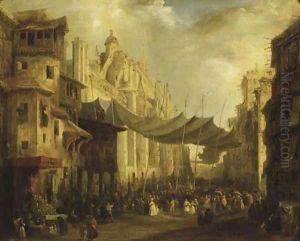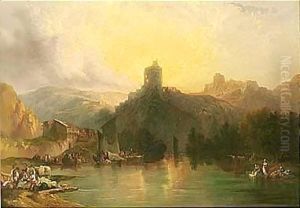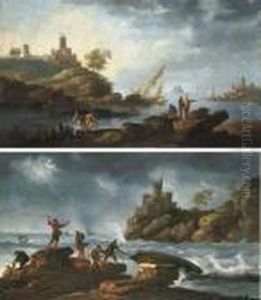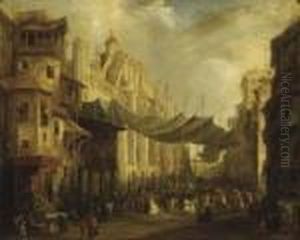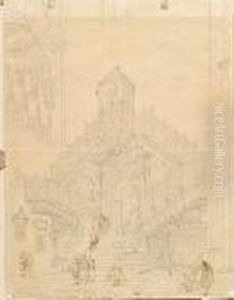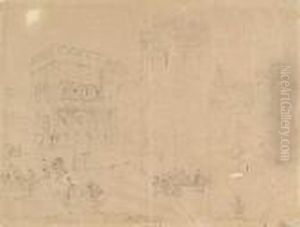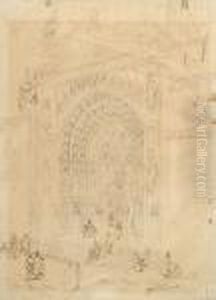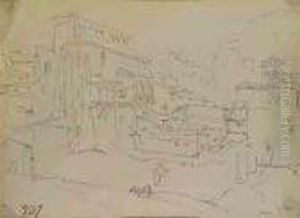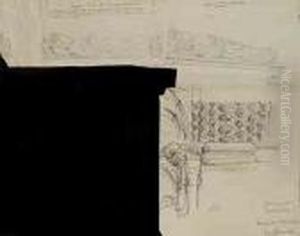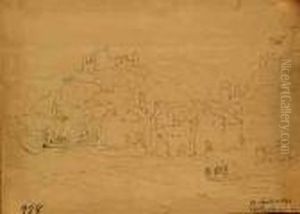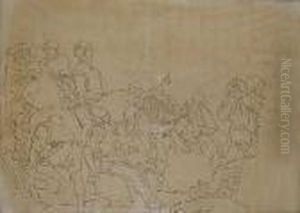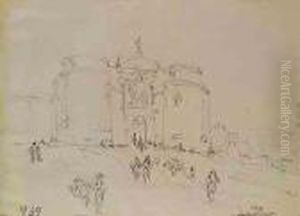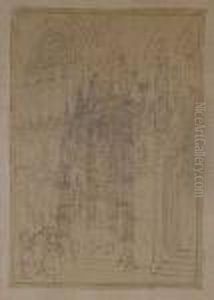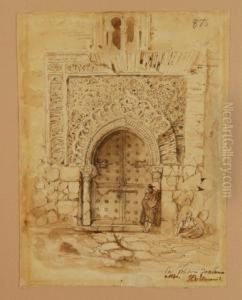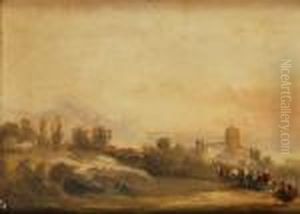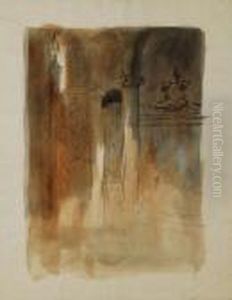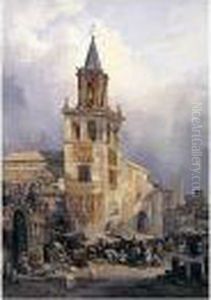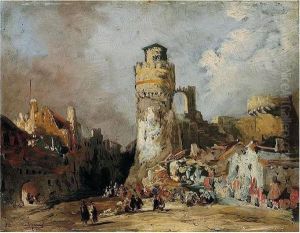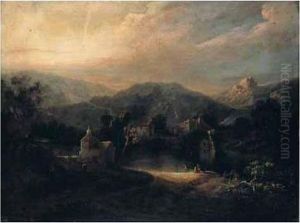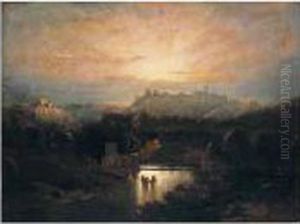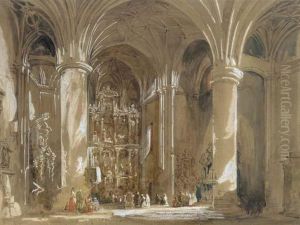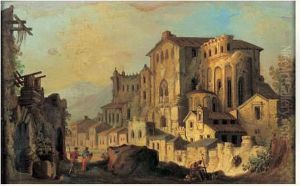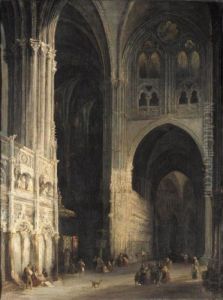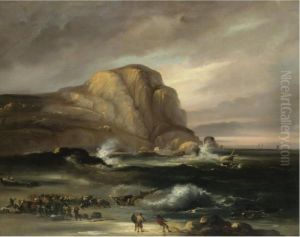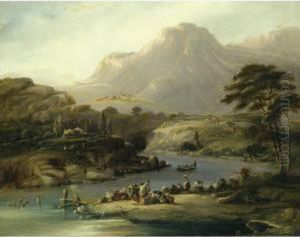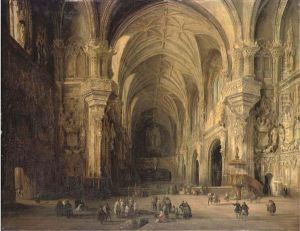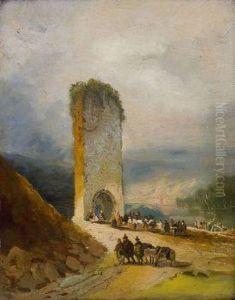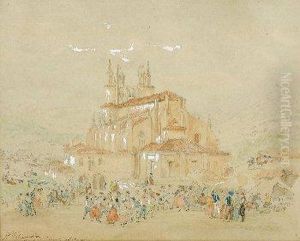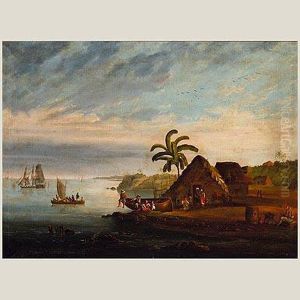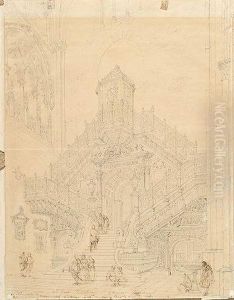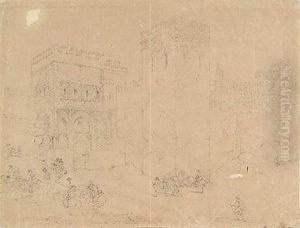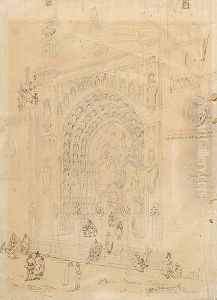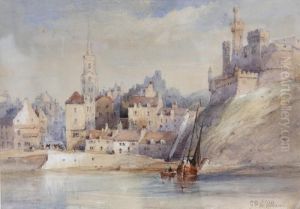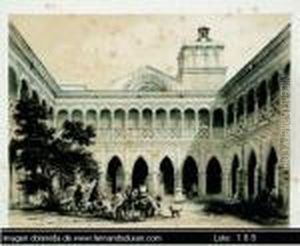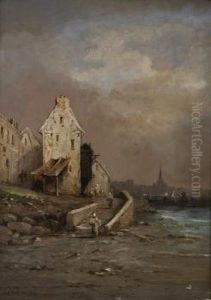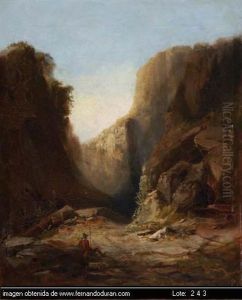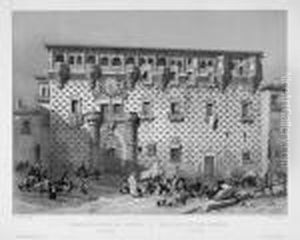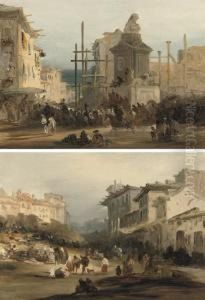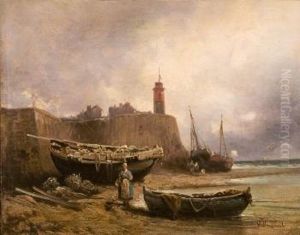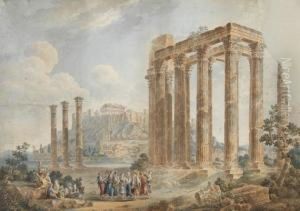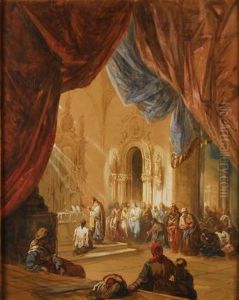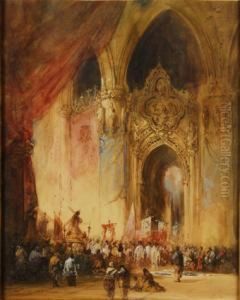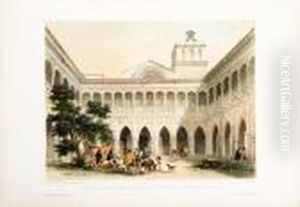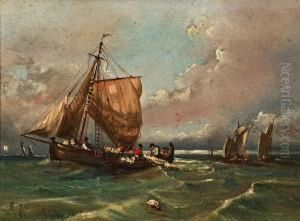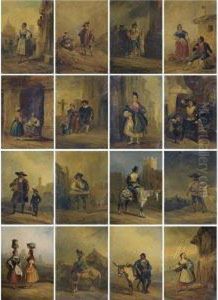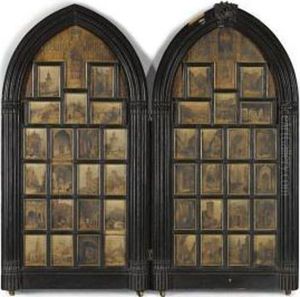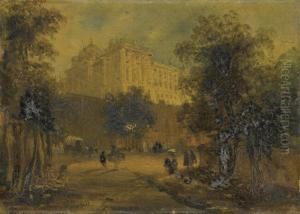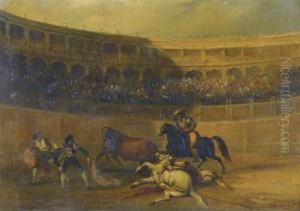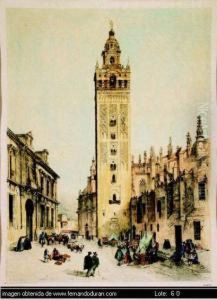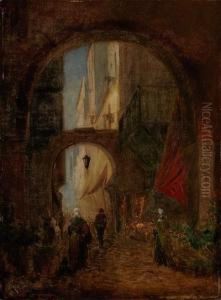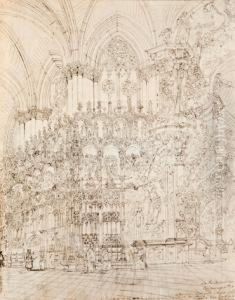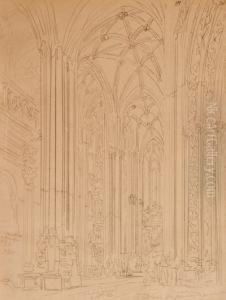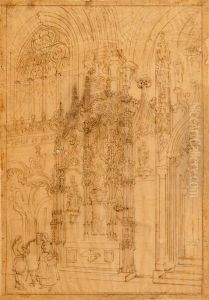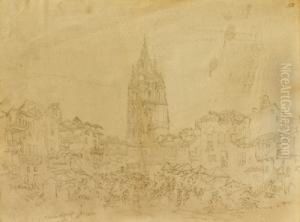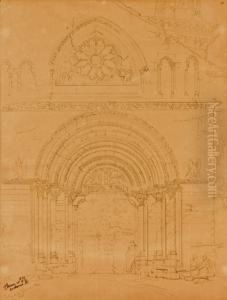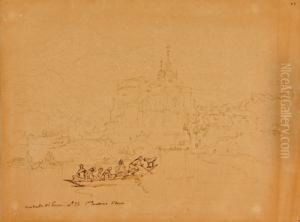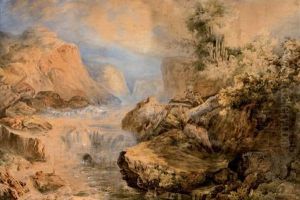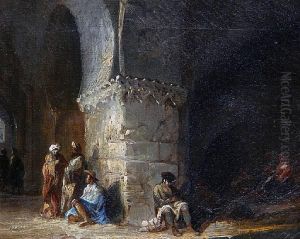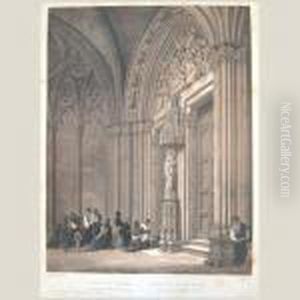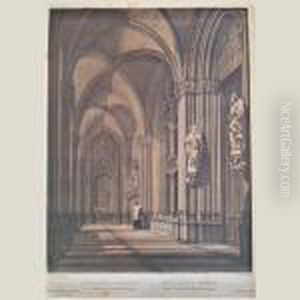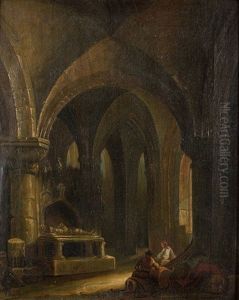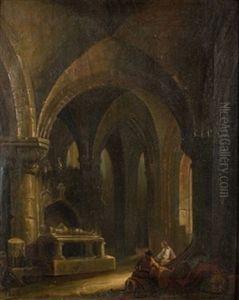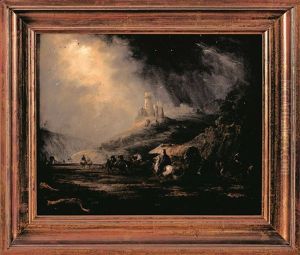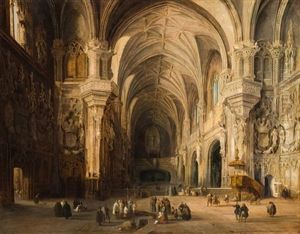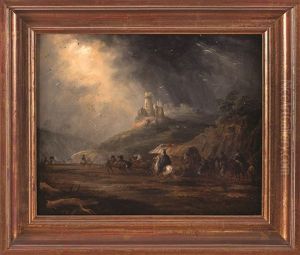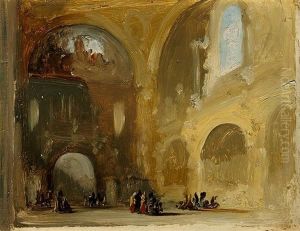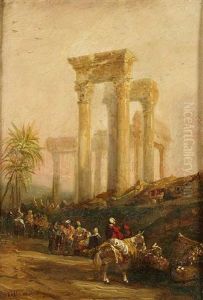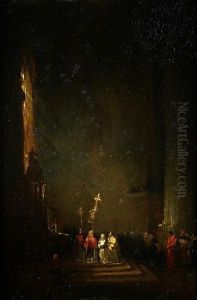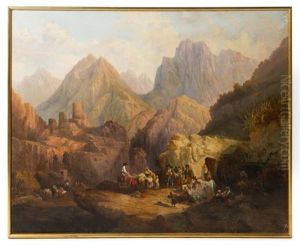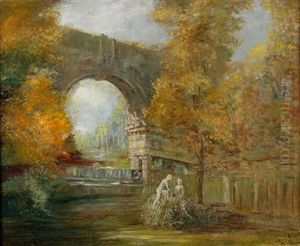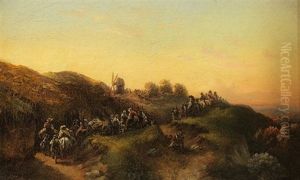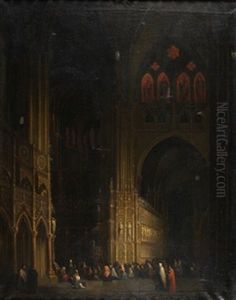Genaro Perez Villaamil Y Duguet Paintings
Genaro Perez Villaamil was a prolific 19th-century Spanish painter, considered one of the foremost romantic landscape and cityscape artists of his time. Born on February 3, 1807, in El Ferrol, Galicia, Spain, Villaamil showed an early interest in drawing and painting, which was nurtured despite the fact that he initially trained as a naval cadet.
His career as an artist began to flourish after he moved to Madrid in the 1820s. There, he became associated with the Romantic movement, which emphasized emotion and individualism, as well as a glorification of the past and nature. Villaamil was particularly influenced by the works of David Roberts and the trend of picturesque travel, which became evident in his detailed and atmospheric depictions of Spanish landscapes and monumental cities.
Villaamil's works were characterized by their dramatic, often moody, interpretations of light and shadow, which he used to enhance the architectural and natural elements in his scenes. He traveled extensively throughout Spain and other parts of Europe, capturing the essence of various locales in his sketches and paintings. His dedication to travel and on-site painting was integral to his creative process and allowed him to produce a vast and varied body of work.
In 1833, Villaamil published 'España artística y monumental' (Artistic and Monumental Spain), a series of lithographs that depicted Spanish historical buildings and landscapes, in collaboration with French lithographer Jules Gaildrau. This publication was instrumental in promoting Spanish heritage and also helped to establish Villaamil's reputation as a master of romantic landscape art.
Throughout his career, Villaamil exhibited his work in numerous exhibitions and was recognized by various artistic institutions. He was a member of the Royal Academy of Fine Arts of San Fernando and was appointed as a court painter to Queen Isabel II of Spain.
Genaro Perez Villaamil's contribution to the romantic landscape genre was significant, and his works continue to be celebrated for their rich depiction of 19th-century Spain. His legacy is preserved in many public and private collections, including the Prado Museum in Madrid. Villaamil's life was cut short at the age of 47 when he passed away on June 5, 1854, in Madrid. Despite his relatively short life, his influence on Spanish art and the romantic movement remains substantial.
